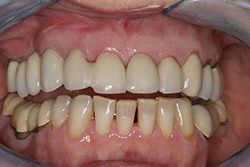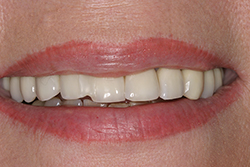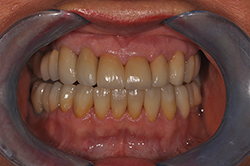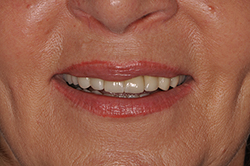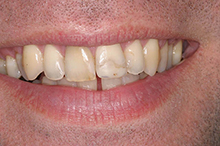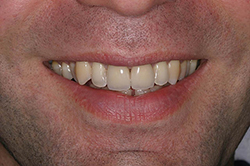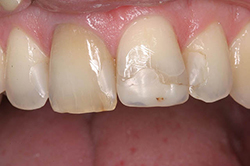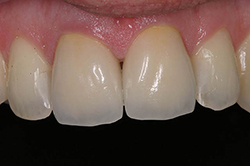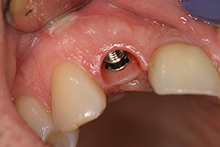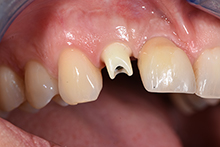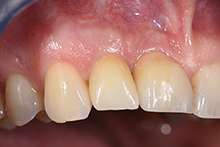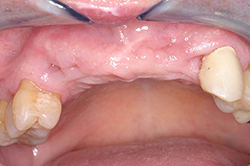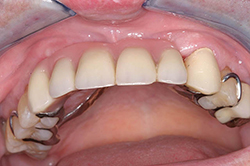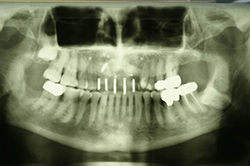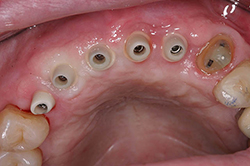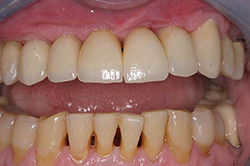Crowns are attached to protect damaged teeth and restore their shape and function. After grinding the affected tooth, an impression of the jaw is taken to create a hollow mould of the tooth surface. The dental technician fills this with liquid plaster, which hardens to form a plaster cast of the patient's mouth. Individual teeth or stumps can be sawn out of the model for further processing.
During the next stages, the crown is manufactured on top of the plaster stump or the stump is scanned and the data sent to a milling centre that makes a crown using CAD/CAM.
Modern demands for a natural appearance mean that the once-popular crowns made of pure precious metal (gold crowns) have practically disappeared. However, modern crowns function just as well. They are either pure ceramic or have a substructure made of precious metal. The dental technician can make these by casting a metal alloy (porcelain-fused-to-metal crowns, PFM) or by electrolysing 99.99% gold(galvano-ceramic crowns).
In our practice, we mainly use the IPS e.max™ crown. This is a modern, all-ceramic system for manufacturing inlays, crowns, partial crowns and small bridges.
All crowns are attached to the teeth with cement. Modern cements are usually mixtures of various components put together in such a way that they guarantee not only biocompatibility but also outstanding fixative properties, light transparency and low shrinkage.
On implants
If the patient is to receive implants, the dental technicians work on a plaster cast with a model implant inserted in the relevant place. However, this implant is merely a substitute for the missing tooth root, i.e. there is no stump to which a crown could be attached. Instead, the dental technician makes a crown abutment out of titanium or zirconium oxide ceramic and builds the crown on top.
As with natural tooth roots, the crown is affixed using the cements described above. Alternatively, a small screw may be integrated into the crown and screwed onto the titanium abutment; however, this is rare.


